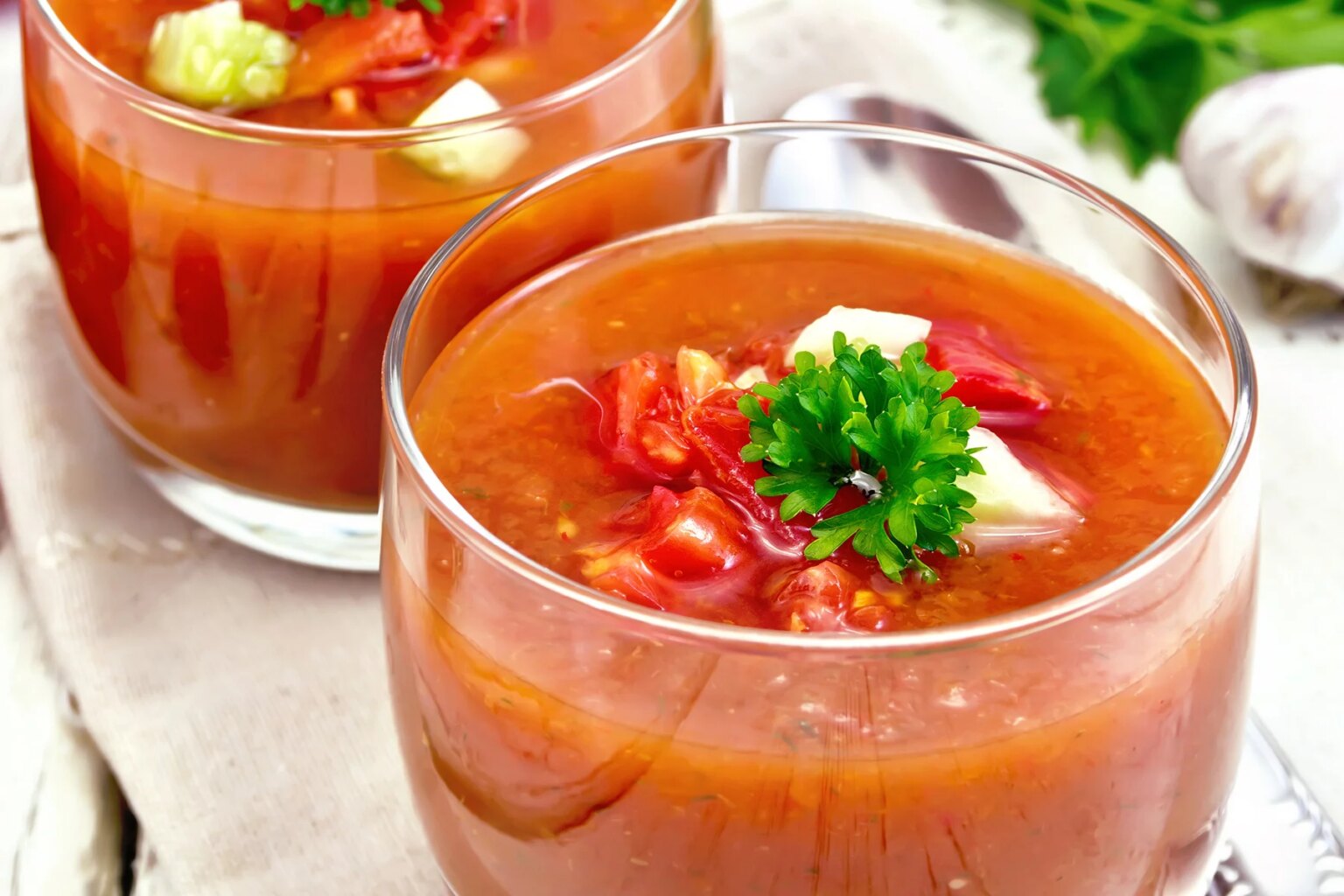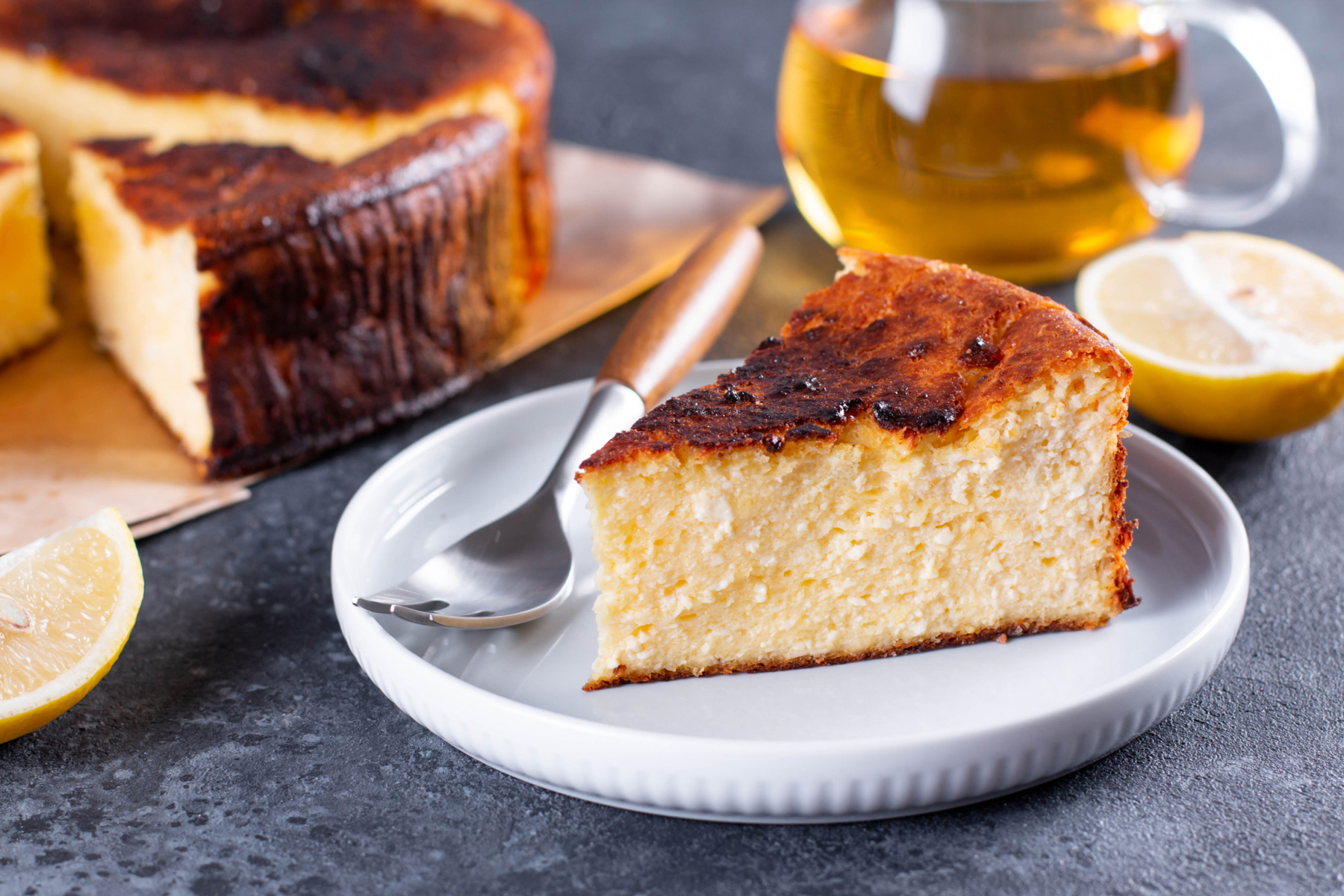If you’ve ever been to Spain, you’ll know just how important food is to the country’s rich and varied culture. Over the centuries, Spanish cuisine has developed into a wide range of delicious dishes based on fresh and colorful ingredients from all corners of the country, whether you’re in Madrid or Marbella.
Many people will be introduced to the wonders of Spanish food through a tapas bar, often marveling at the choices and flavors on offer. But Spanish cooking is a whole lot more than delicious tapas. From hearty stews to light bites, there is something to satisfy every palate in this vibrant country.
To help bring a little Spanish excitement into your kitchen, here are the top 10 Spanish foods, along with recipes to try at home. ¡Qué aproveche!
HelloFresh
Want to create some classic Spanish dishes in your own kitchen? HelloFresh is a leading meal-kit provider that delivers innovative recipes from Spain and around the world straight to your doorstep. Choose from a range of recipes and let HelloFresh transform mealtime for you and your family.
1. Croquetas
We start our list with the ultimate tapas bar classic – croquetas. Many countries do their own version of croquettes, but the Spanish have them down to a fine art. The best ones combine some unforgettable Iberian flavors, whether jamón (cured ham), morcilla (blood sausage), or bacalao (fresh cod) blended with béchamel sauce. These are then breaded and fried and served up with a sauce of your choice. If you don’t fancy cooking, most local bars will serve their own variety, with the best usually found in the scrubbed-down neighborhood haunts where you are least expecting it.
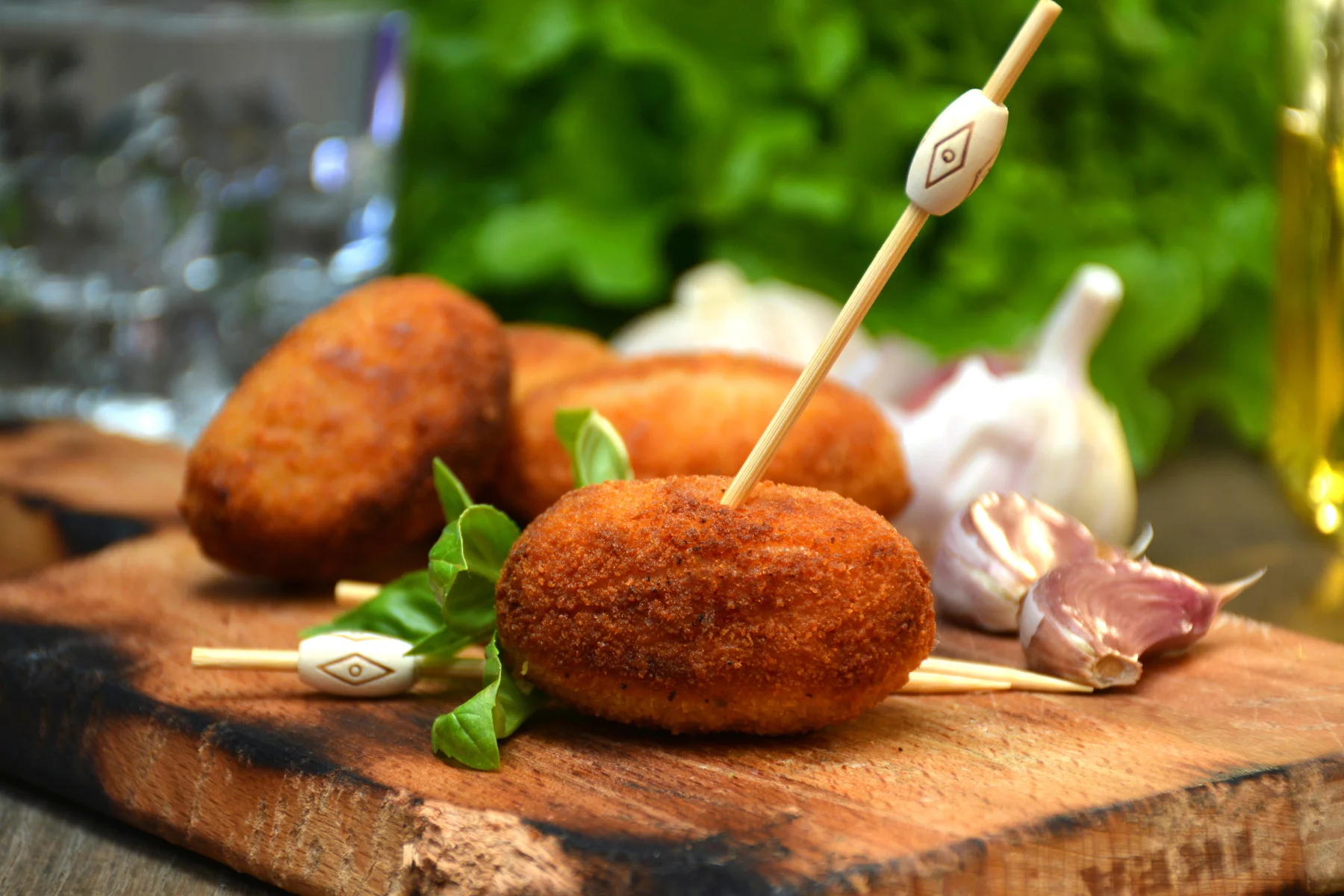
Make your own croquetas
- Perfect the ham and béchamel croquette
- Try this local recipe for mushroom croquettes
2. Tortilla Española
Another tapas bar favorite is tortilla Española – or Spanish omelet as it’s known around the world. However, it’s not just a tapas treat. Tortilla can also be eaten as a main dish, a break time snack, or even in a sandwich, which is popular with kids. To create your own tortilla, you’ll need to slowly fry up onions and potatoes in olive oil before adding the egg. This will caramelize the onions and give your omelet that extra sweetness. If you’re feeling adventurous, though, why not try adding chorizo and spinach? But be warned, as delicious as this new combination is, the locals won’t let you call it a tortilla!
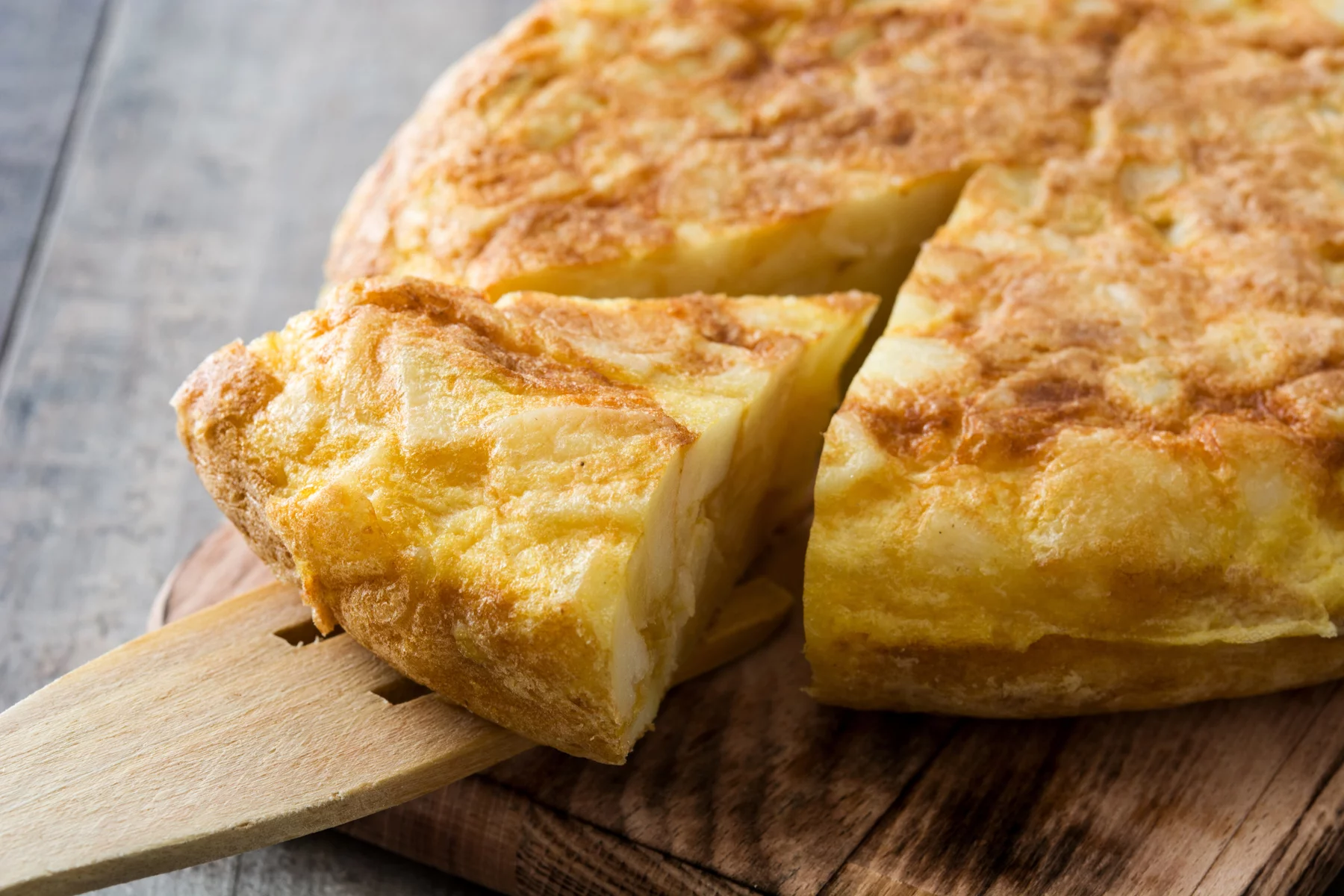
Make your own tortilla Española
- Follow this detailed classic tortilla recipe
- And this recipe includes plenty of photos
- Try this Spanish-Italian mash-up recipe from Jamie Oliver
3. Gazpacho
What better way to cool down during a hot Spanish summer than with a cool bowl of gazpacho? Usually served as an appetizer, this chilled tomato soup definitely packs a punch. To make it, simply blend up some fresh tomatoes, peppers, cucumbers, garlic, and herbs, and serve it with toasted bread for a low-calorie dish crammed full of vitamins. The idea of eating cold tomato soup might sound a little odd to some foreigners, but once you’ve enjoyed a traditionally made gazpacho on a hot summer’s day, you’ll be hooked! For a twist, add some bread to create the Andalusian favorite, salmorejo.
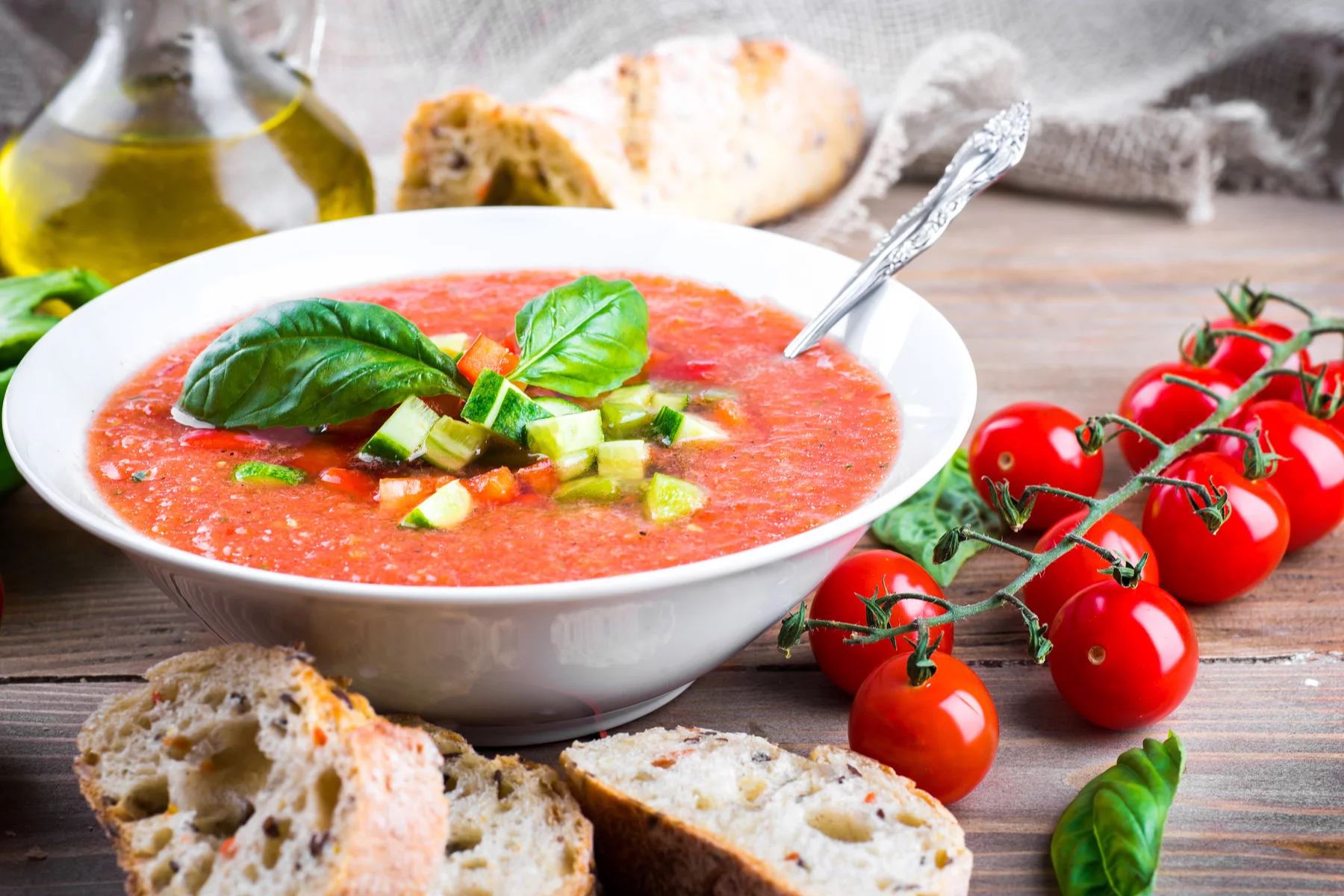
Make your own gazpacho
- Try this traditional gazpacho recipe
- Or watch a video on how to make it
- Chuck in some bread with this quick and easy salmorejo recipe
4. Pisto
Think ratatouille is something you’d only ever get served in a French restaurant? Think again. Okay, so it’s not technically ratatouille, but pisto is often called the Spanish version of the classic French dish. The recipe sees tomatoes, peppers, zucchini, onions, and garlic sliced up and roasted with a lot of olive oil to give it that classic Mediterranean flavor. Hailing from the plains of the La Mancha region, pisto can be a side dish, appetizer, or even a main course. Serve it with some fresh salad, bread, and of course, some local red wine for the ultimate Spanish experience.

Make your own pisto
- This recipe makes a vegetable-packed pisto
- Grill the vegetables for extra flavor
5. Pulpo a la gallega
Octopus is a big deal in Spanish cuisine, whether it’s deep-fried and served as tapas or transformed into something a little more sophisticated. One of the more elaborate dishes is the popular pulpo a la gallega, which sees paprika, rock salt, and olive oil combined to bring out the very best flavors from the octopus. This is usually served on sliced potatoes for a light yet warming meal. The dish hails from the north-western region of Galicia, which is definitely something to note for seafood lovers. After all, the region is well-known around Spain for its unique, seafood-heavy cuisine.
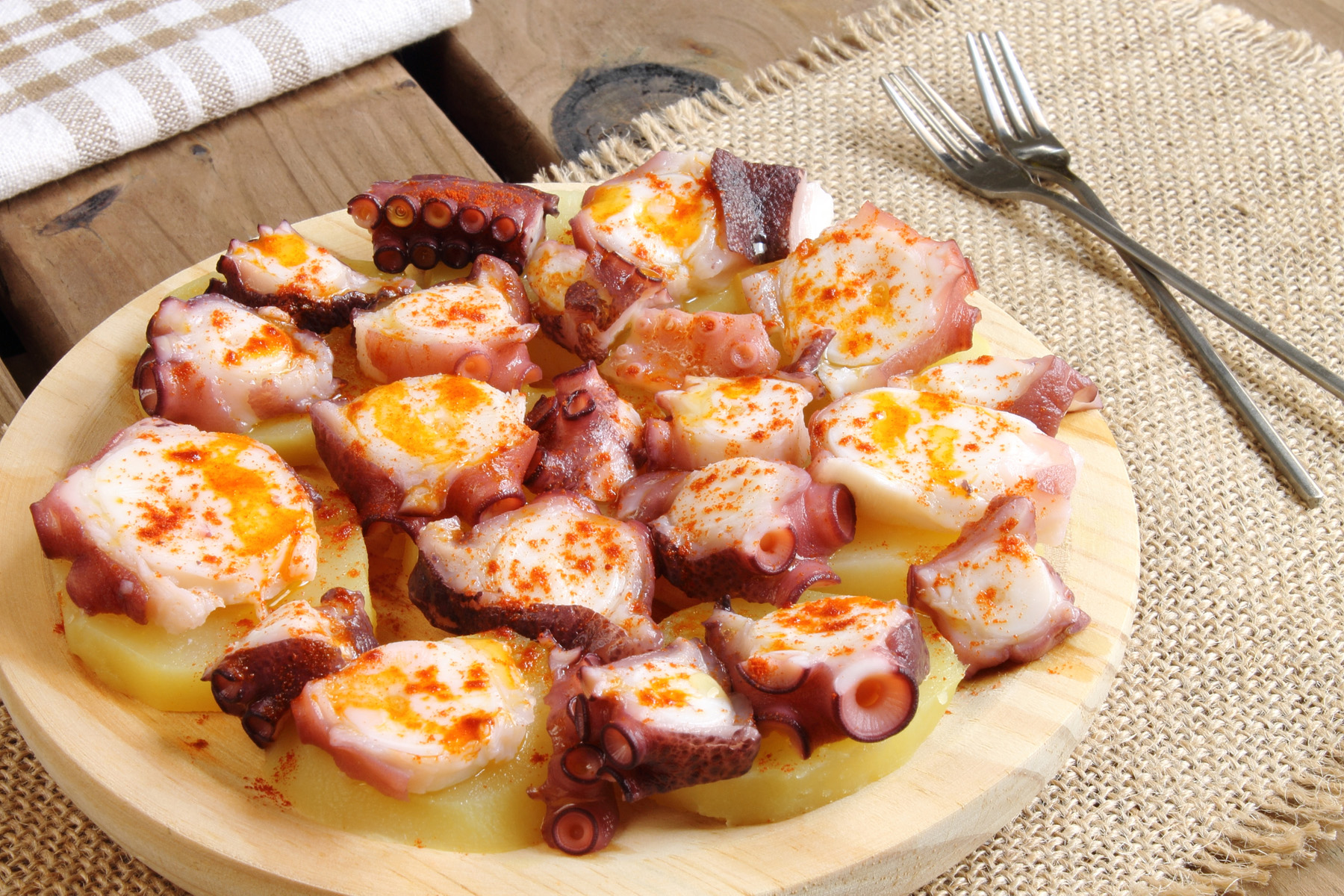
Make your own pulpo a la gallega
- Try this traditional recipe with fresh octopus
- Watch a video on how to prepare the dish
Allianz Care
Moving country doesn’t just mean a change of scene – your diet usually changes, too. Trying new recipes, dining out, and experiencing another country’s cuisine is exciting, but what about your digestive system? Read Allianz Care’s report on their Expat gut health survey to understand how moving abroad affects nutrition.
6. Fabada
You might not picture winter warmers when you think about Spanish food. However, it can get pretty cold on the Iberian peninsular and when it does, the locals love to tuck into a hearty fabada. This popular bean stew is perfect when the temperatures drop and definitely packs a punch when it comes to flavor. You can throw all sorts of spicy meats into your stew, including chorizo, morcilla (blood pudding), and more. Traditionally, fabada hails from the Asturias region. However, there are plenty of regional variations you can try throughout Spain.
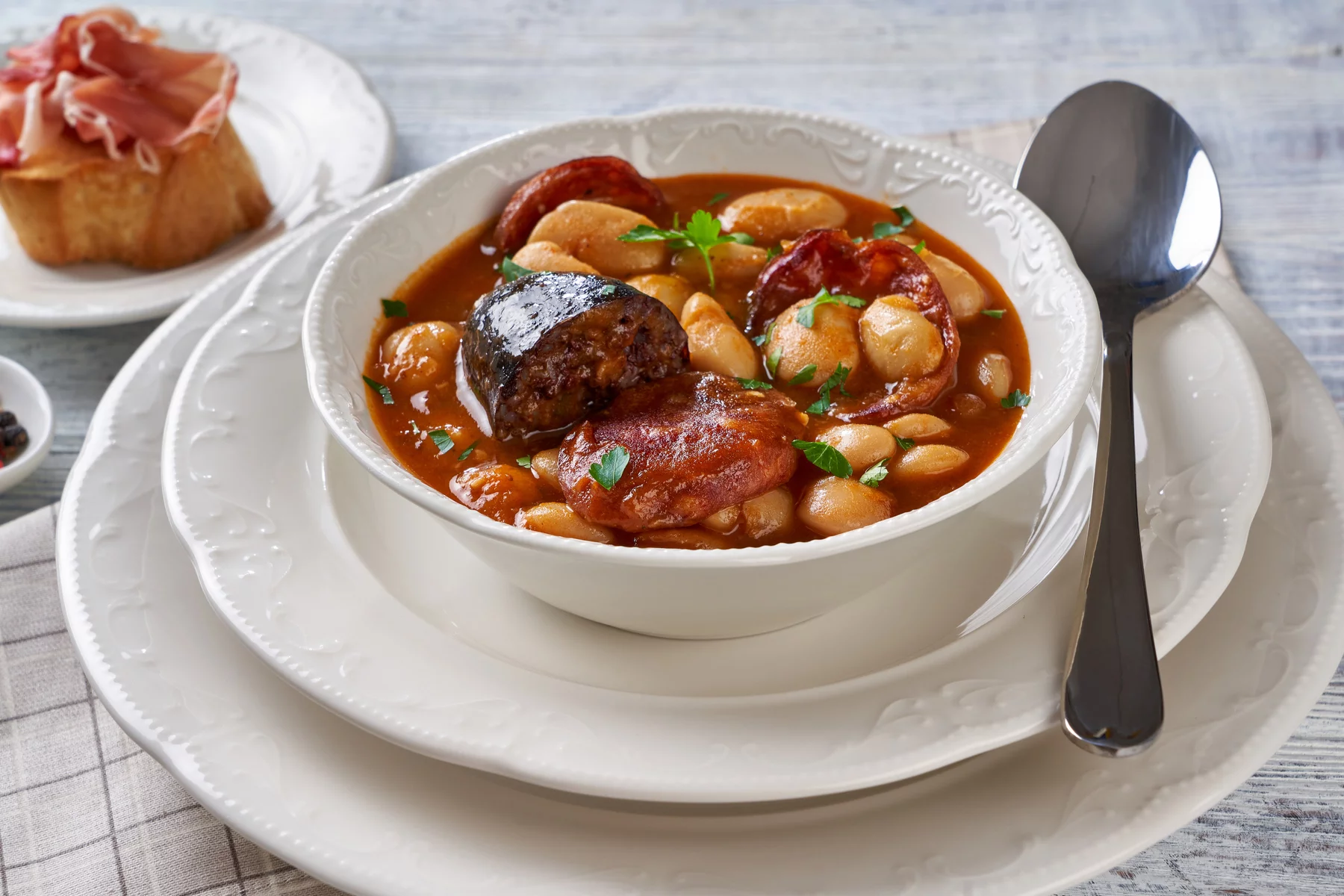
Make your own fabada
- Make the traditional fabada asturiana
- Or watch this video to guide you
- Use chickpeas to prepare a cocido
7. Paella
For many, this colorful rice dish epitomizes Spanish food. However, many Spanish people actually see paella as a Valencian dish, not a national dish. But that shouldn’t stop you from making it at home. Traditional paellas often use chicken or rabbit (or both), but many chefs will throw in some seafood to keep things fresh. Depending on your tastes, you can opt for calamari, mussels, prawns, or even clams. If you’re feeling particularly adventurous, though, why not try a black paella? This uses black rice stained with octopus or squid ink and is a great variation on the traditional paella.
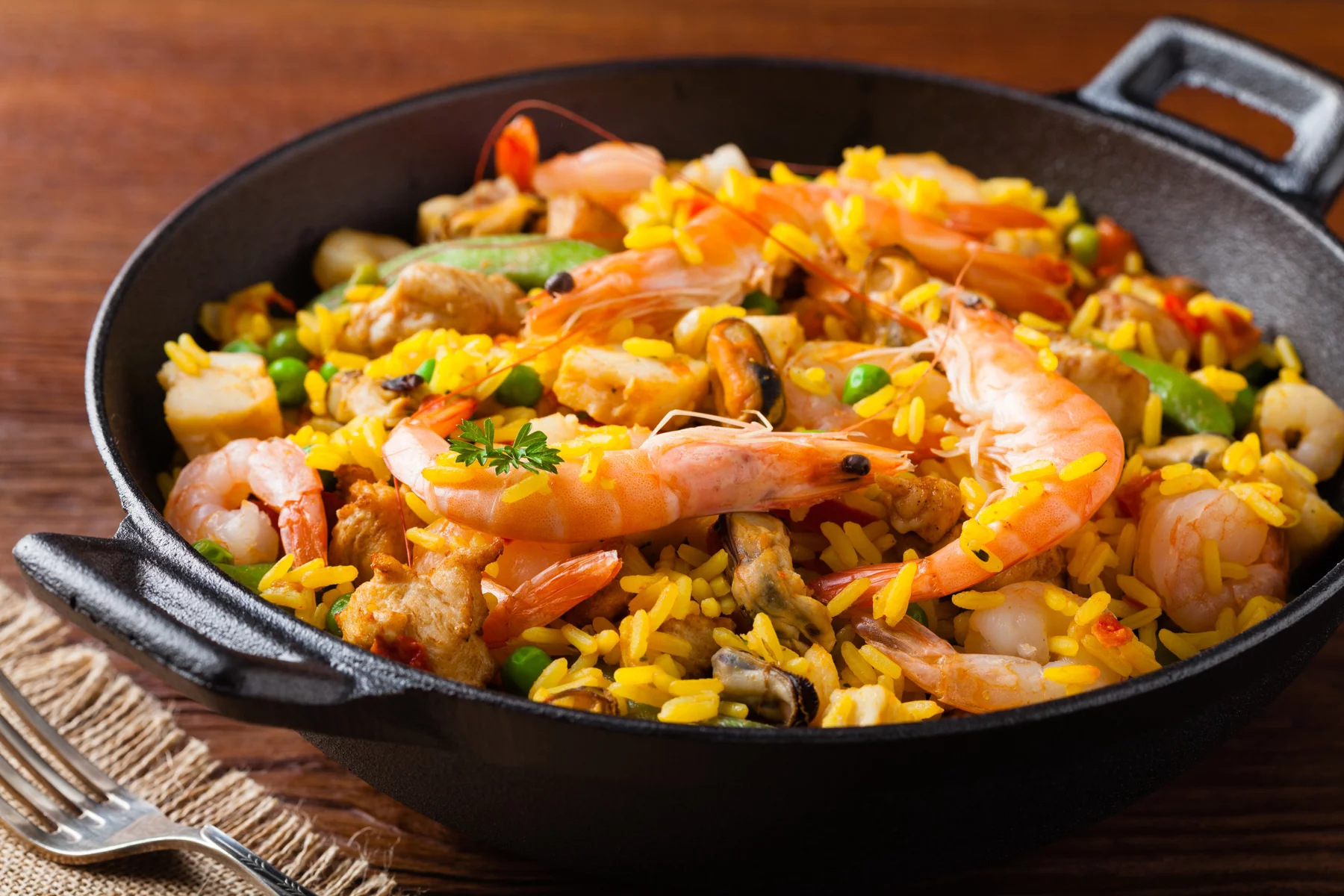
Make your own paella
- Try this traditional chicken paella recipe
- Rick Stein has a great recipe for seafood paella
- Try a black rice paella using squid ink
8. Gambas al ajillo
The Spanish love their seafood, and a lot of their most popular dishes showcase the very best flavors found under the sea. One of these is gambas al ajillo. Whether you try it as an appetizer or as tapas alongside plenty of other flavors, the dish will definitely stand out from the crowd. The prawns are cooked in a small clay dish filled with hot olive oil, roasted garlic, and a small pinch of chili, which gives it a little kick. It is best served with crusty bread, which is perfect for mopping up all that delicious garlic sauce!
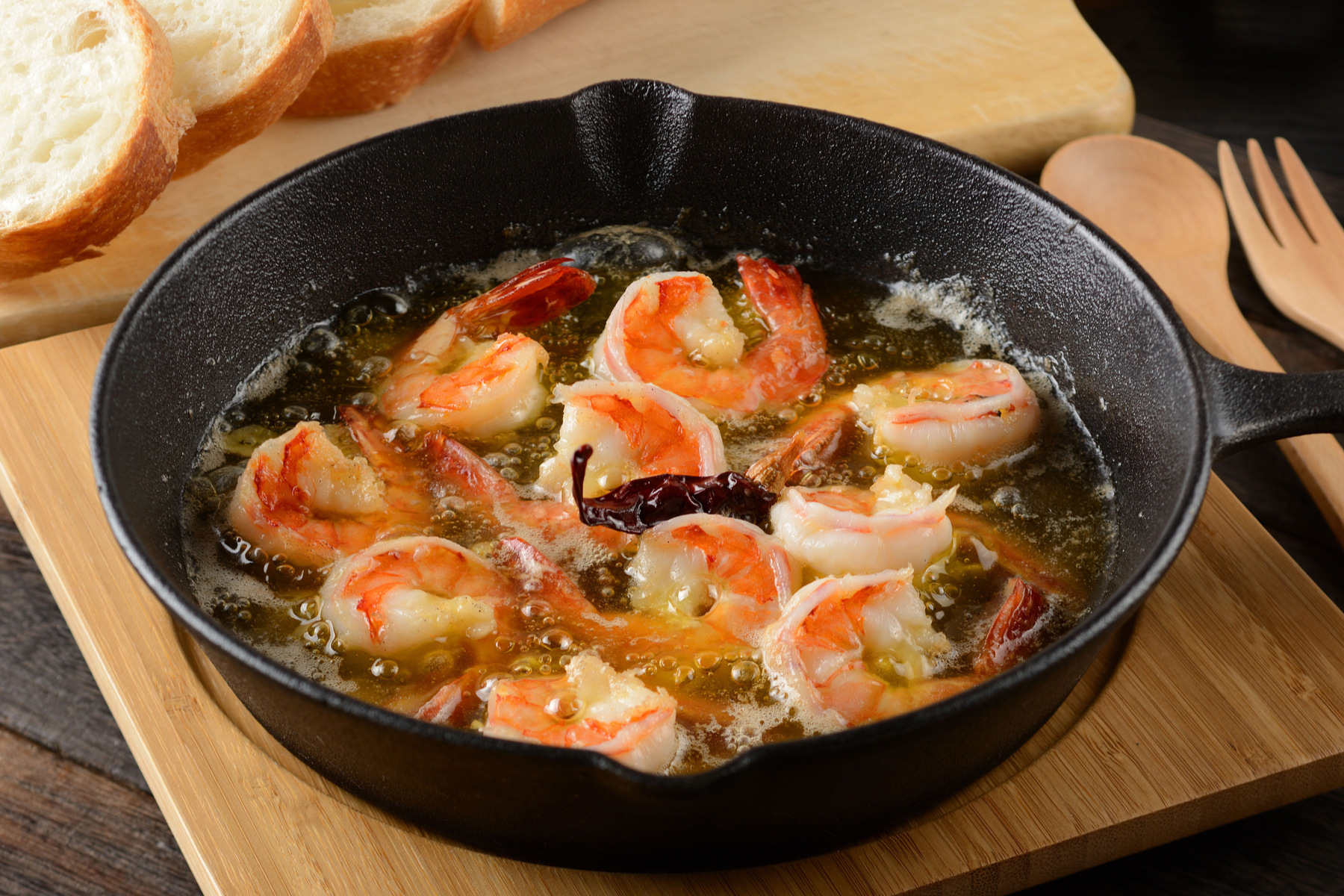
Make your own gambas al ajillo
- Try this authentic gambas al ajillo recipe
- Or watch how to create this tasty dish
- Mix it up and make gambas a la plancha by using grilled shrimps
9. Patatas bravas
Looking to whip up some delicious tapas for your next Spanish dinner party? Then look no further than patatas bravas, a dish that is native to Spain and super easy to create. This crowd favorite typically consists of cubed potatoes, which are fried in oil and served warm with spicy sauce. The dish is commonly served in restaurants and bars in Sevilla and throughout Spain. And if you’re feeling adventurous, you can always experiment with adding a number of extra toppings, such as chorizo, chicken, or fried fish.
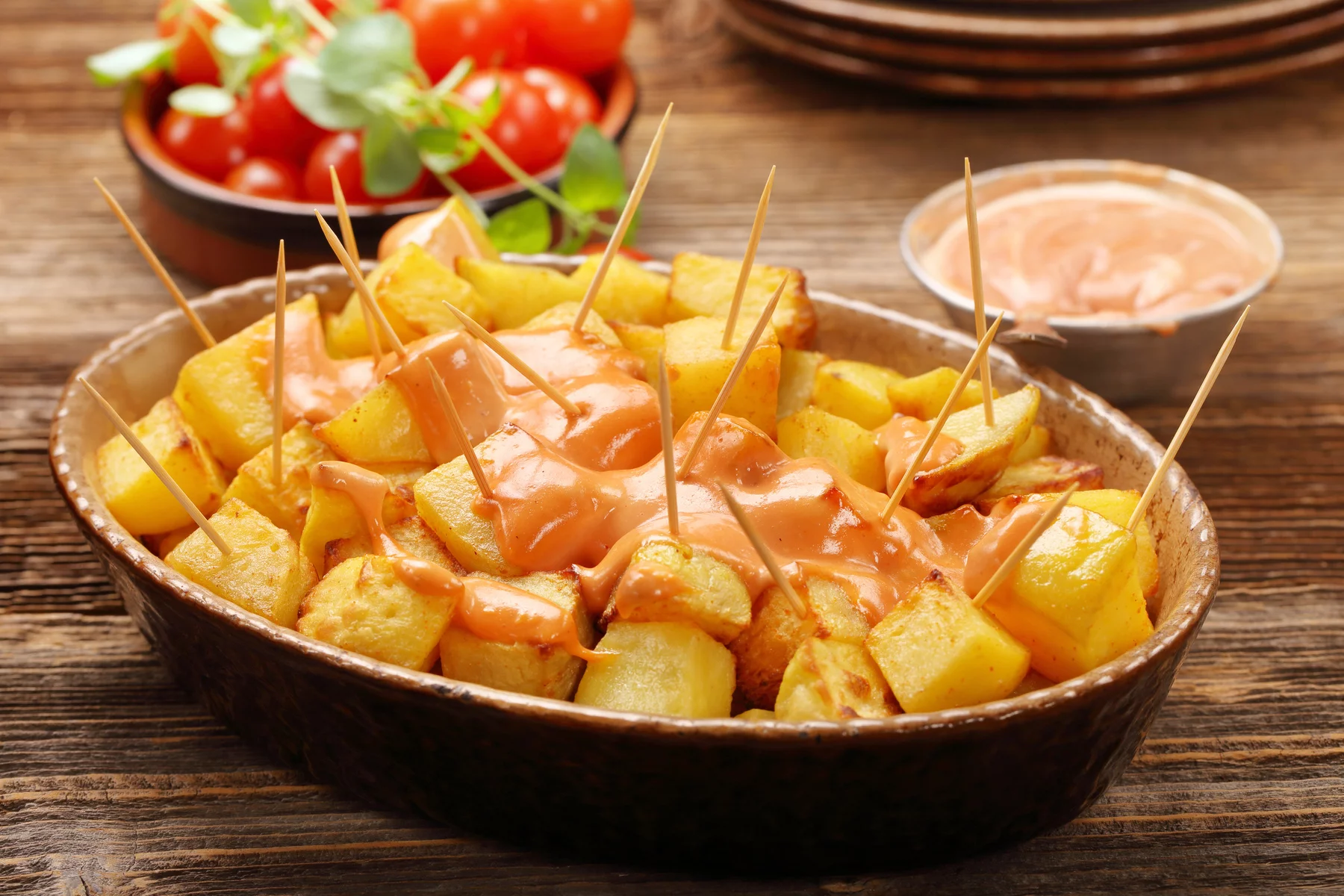
Make your own patatas bravas
- Follow this simple recipe for patatas bravas
- Print your own recipe for the kitchen
- Make a meal of it with this smoky Spanish chicken recipe
10. Leche frita
Ever wondered what fried milk tastes like? Neither had we until we came across this Spanish delicacy. Leche frita – which translates to fried milk – is a popular dessert across the north of Spain, and a firm favorite with kids. Milk pudding is encased within a warm, crunchy batter and dusted with sugar and cinnamon. You then serve it with whipped cream or ice cream and enjoy. Another popular dessert is torrijas, a Spanish twist on French toast. This tasty dish sees thick white bread dunked in an egg custard mixture, fried up, and served with lashings of cinnamon.

Make your own leche frita
- Try this recipe that adds nutmeg
- Watch leche frita being made
- Follow this torrijas recipe or this Madrid-style recipe for torrijas
And something for after…
If you’re putting together the ultimate Spanish dinner party, the fun doesn’t have to start and finish with the main courses. There’s plenty more you can pack into your night to keep the vibe going.
Wine and cheese
When it comes to wine and cheese platters, you might naturally associate this with French cuisine. However, a great selection of wines and cheeses can be found all across Spain. From moreish cheeses like manchego to exquisite Spanish wines from La Rioja, there’s something to satisfy all tastes.
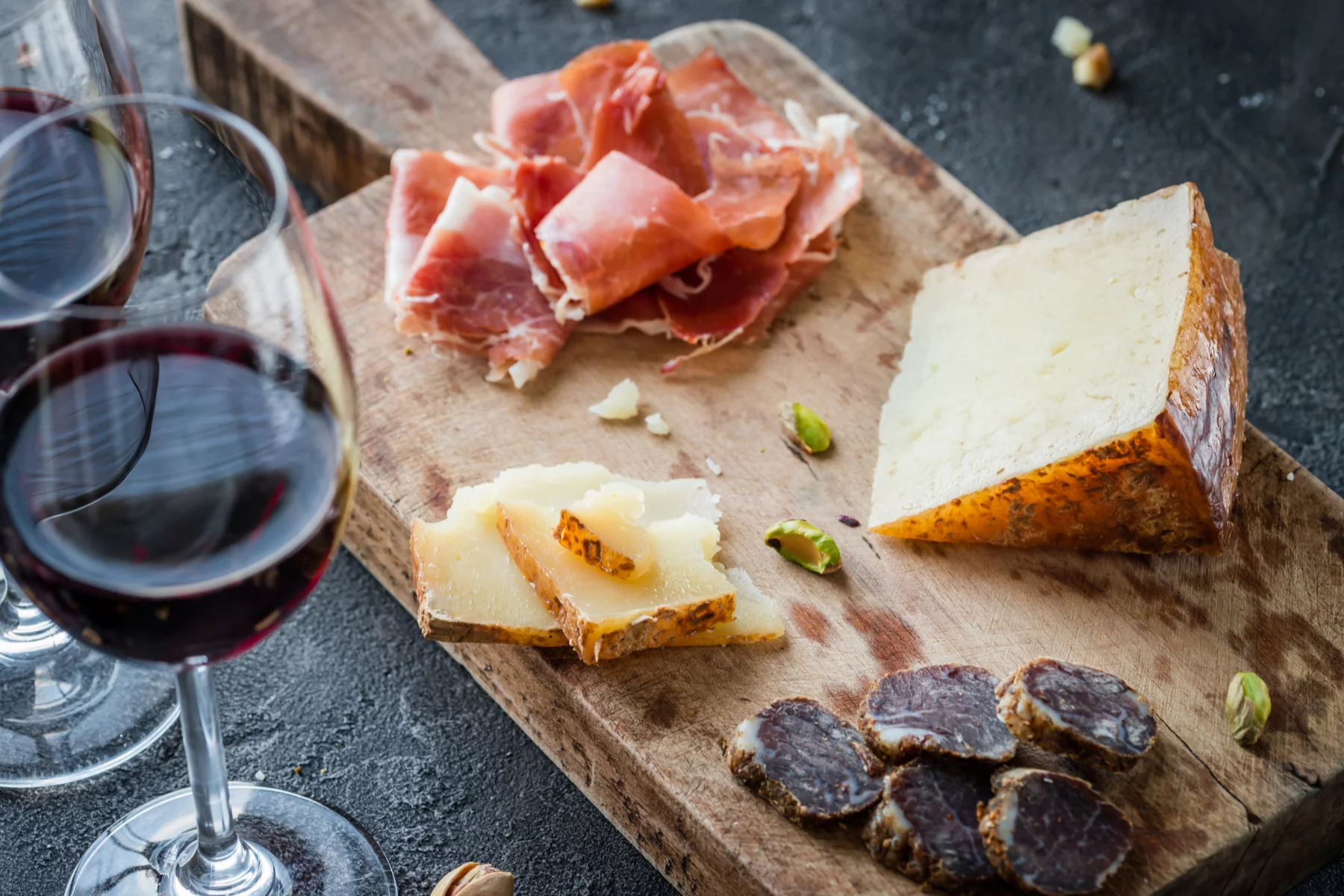
There are few Spanish drinks quite as popular around the world as sangria, and it’s easy to see why. This delicious wine-based punch is great at parties and it’s super simple to make. You’ll come across plenty of pre-made sangrias in grocery stores and supermarkets, but the best tasting is made at home. Simply mix chopped fresh fruit with red wine and add some brandy to warm things up a little.
Now that you’ve learned about some of the culinary delights of Spain (and how to make them!), you may be wondering how moving abroad affects your digestive health. According to the Allianz Care Expat gut health survey report, many internationals find they need to adapt to eating out more, cooking less, and trying new ingredients. These changes can lead to digestion issues and increased gut-related symptoms.
The survey, which took responses from 3,000 expats of several different nationalities and resident countries, revealed that 77% reported a negative impact on their daily lives due to digestive symptoms. Additionally, expats often eat more processed and convenience food than in their home country, and find it difficult to source familiar ingredients. The insights in the report can help you enjoy your new country’s cuisine while maintaining a healthy digestive system.
Make your own sangria
- Check out this traditional sangria recipe
- Use white wine to make white sangria
- Mix it up with these five easy-to-make sangria recipes
